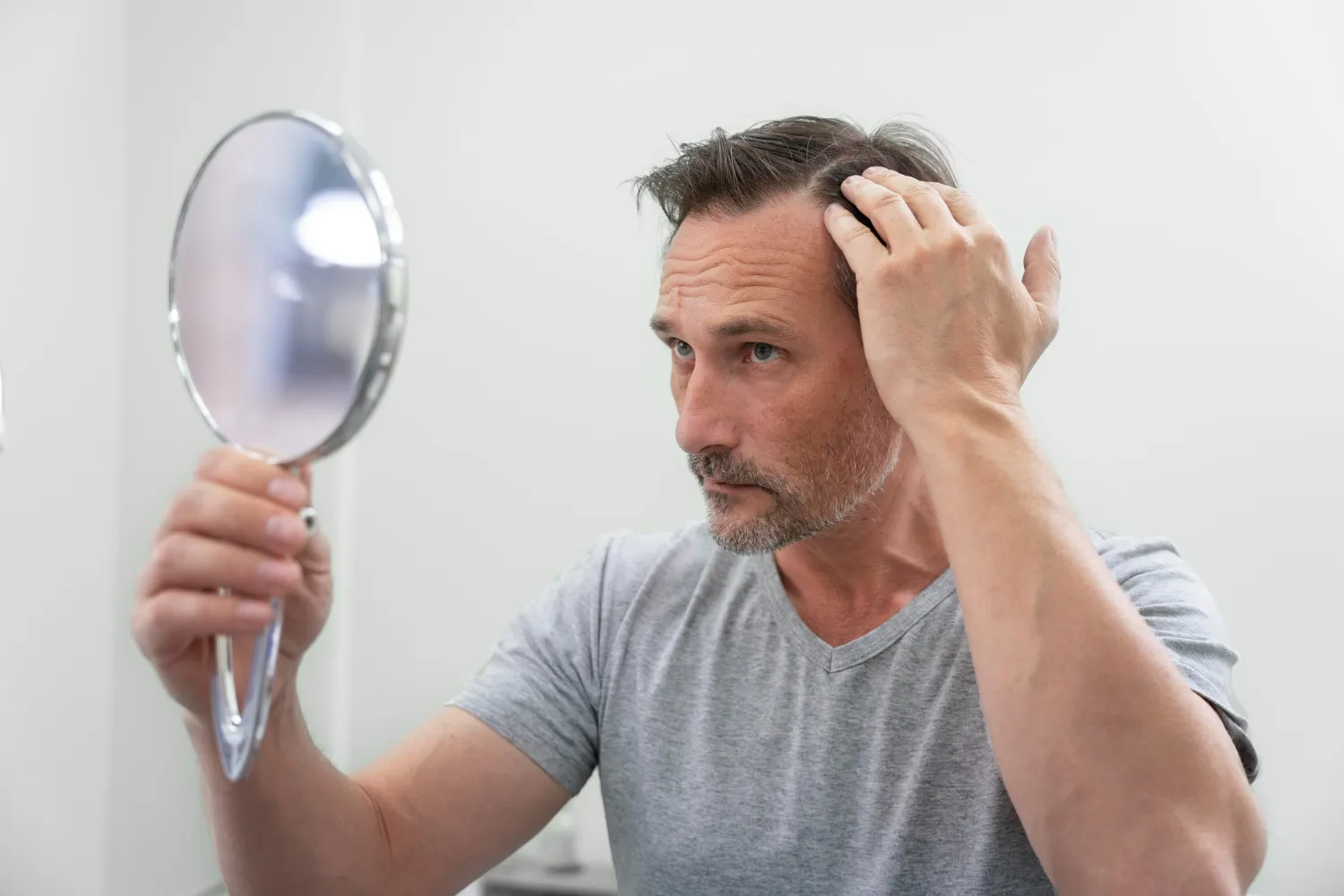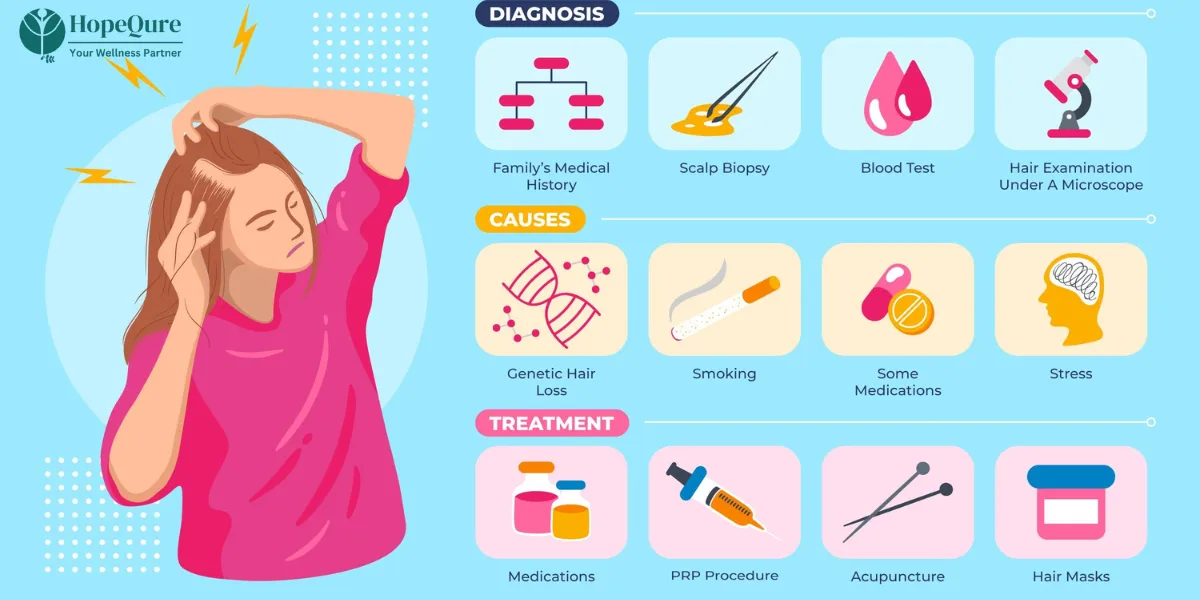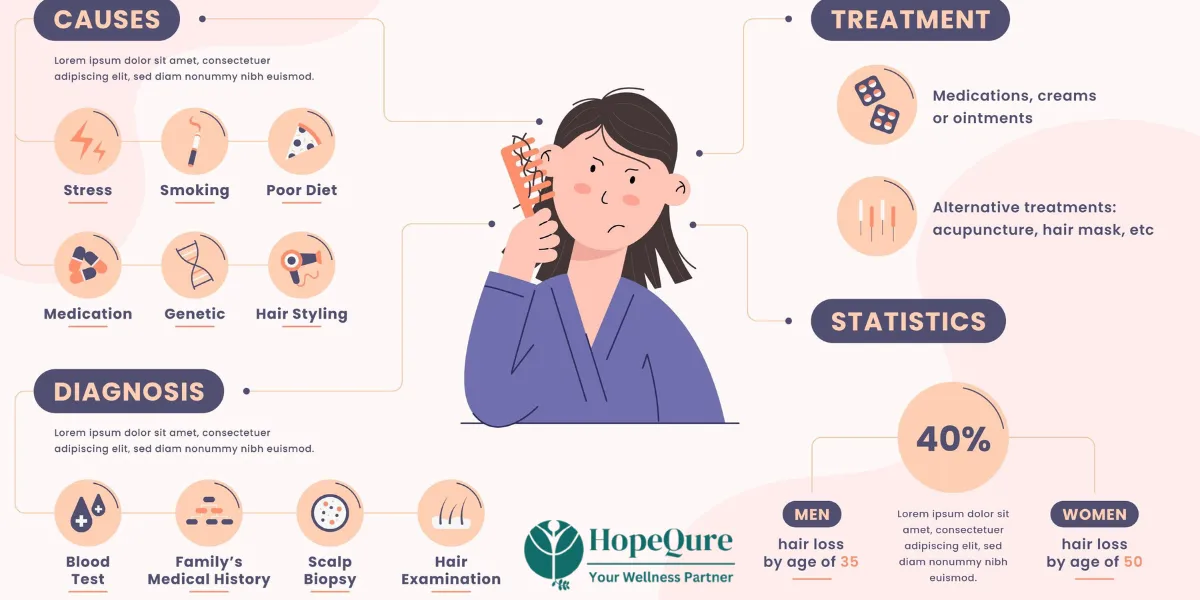A Comprehensive Guide to Hair Restoration for Men and Women
Millions of people, regardless of age or gender, are suffering from hair loss. Thinning hair, balding spots, or receding hairline usually affects most persons and makes one feel inferior in terms of self-esteem. It is not just about looks; it s a psychological thing. Some bit of hair loss is natural as we get old, but knowing what causes it and the things that can be done to treat it can help you regain control over the health of your hair. In this article, we will identify the most common causes of hair loss in both men and women and also how dermatologists diagnose them as well as all possible treatments that can be used to restore your hair growth.
What Causes Hair Loss?

Hair loss usually results from a complex interplay of one s genetic, hormonal, and environmental factors. This understanding is important to better manage and protect from hair loss.
1. Genetics (Androgenetic Alopecia)
At present, androgenetic alocepia or male and female pattern baldness is the most common form of hair loss caused by inheritance. The way it is inherited in the genes is said to differ in people, and it usually develops slowly. It is quite common to see such differences in the way both men and women develop this condition.
In Men: Hair loss typically starts as a receding hairline or thinning at the crown. This will continuously be observed as many men will always experience a continuing receding hairline leading to bald patches.
In Women: It is mostly diffuse thinning of hair over the scalp, with the most thinning being at the crown. Furthermore, women normally will not go completely bald, although they can thin out to a great level.
2. Male vs. Female Pattern Baldness
- For Men: This process commonly begins late during the twenties to early thirties. Hair loss concentrates mostly on the temples, crown, and frontal hairline.
- For Women: Hair thinning appears to be diffused and demonstrates maximum thinning on crown and partition. However, it would usually start in the mid-thirties or later.
3. Stress

Physical and emotional stress may well result in the kind of hair loss termed telogen effluvium-the temporary loss of hair that is induced by stress leading to an unusually elevated number of hair follicles entering the shedding condition of the hair.
Women: Stress during hormonal fluctuations (e.g., pregnancy, postnatal recovery, or menopause) tends to aggravate hair thinning. Long periods of emotional stress-from trauma, for example-are usually associated with corresponding hairline loss.
Men: Stress-induced hair loss tends to be more severe in men, and purely social, spousal, familial, or work stress can cause some degree of telogen effluvium, usually showing some degree of thinning within about 2-3 months of the stress event.
4. Drugs
Many medicines are responsible for hair loss as side effects, and it occurs in men and women alike.
Chemotherapy: It is one of the most notorious causes of hair loss, as chemotherapy drugs act on rapidly dividing cells with special reference to hair follicles.
Blood Pressure Medicine: Other heart medications along with beta-blockers and ACE inhibitors cause hair loss sometime through time.
Antidepressants: Drugs such as SSRIs (Selective Serotonin Reuptake Inhibitors) have been known to also make both sexes thin in hair or shed hair.
Oral Contraceptives (for Women): Hormonal changes brought about by birth control pills may also contribute to hair loss, especially in the case of frequent changing.
5. Nutritional Deficiencies
The most detrimental factors to hair growth are a lack of iron, zinc, and proteins since these elements are so critical. Hair loss is a problem that most men and women suffer from due to deficiencies in their diet on these vitamins and minerals. Most of all, in most cases, for women, iron deficiency-anemia is pretty common-resulting in much hair.
Women: Nutritional deficiencies, especially in the course of time, can result in hair thinning during menstruation or in pregnancy. Anemia (iron deficiency), low biotin levels, and other conditions directly impact hair wellbeing.
Men: Deficiency of protein, zinc, as well as vitamins D, and a slow growth of hair and thinner would result.
Common Hair Loss Types

Gaining insight into the various types of hair loss aids in the investigation of possible causes and the eventual choice of appropriate treatment.
1. Androgenetic Alopecia
Most common type of hair loss in males and females alike. It usually presents as a progressive thinning of hair and a balding resting stage wherein gradual thinning and baldness appear typically to start from the temples or crown.
2. Telogen Effluvium
It is a kind of hair loss triggered by physical or emotional stress, medication, or nutritional deficiency. The major feature is sudden hair shedding occurring in a few months, following a significant stressful event or illness.
3. Alopecia Areata
Alopecia areata is an autoimmune disease in which some of the body glands dislike hair follicles, thereby causing small, round bald patches. Affects both genders alike and can strike any age.
4. Traction Alopecia
This kind of hair fall occurs due to sustained tension on hair from tight hairstyles, for instance, braiding, ponytails, or tight buns. It occurs mainly among people who regularly wear their hair tightly.
How to Diagnose Hair Loss: A Step-by-Step Guide
The diagnosis is the first step to giving any meaningful prospect of treatment with any measure of success in hair loss. A good consultation with your dermatologist or hair restoration specialist is of paramount importance for identifying the particular type and cause of the hair loss.
1. Physical Examination
Dermatologists start with the physical examination of the scalp and hair. This comprises observing for sudden thinning or miniaturization of the hair follicles and defining the pattern of hair loss.
2. Scalps Biopsy
Scalps biopsy is required when scarring, infection, or any other condition affecting the hair follicles is suspected. A small section of scale is taken for deep analysis.
3. Blood Tests
Blood tests are taken so as to unveil any underlying conditions such as thyroid dysfunction, iron deficiency, or hormonal imbalance associated with hair loss.
4. Trichoscopy
Trichoscopy is a procedure whereby the scalp and hair follicles are closely examined with the aid of a special magnifying tool. This method estimates the extent of hair loss and checks for any injury to the roots of hair.
Treatment Options for Hair Loss

There may be several treatment options available based on the cause and extent of loss. Treatment options we will discuss can be grouped as follows:
1. Medications
- Minoxidil (Rogaine): a topical solution stimulating hair follicles and will grow hair. Over-the-counter Minoxidil is for men and women.
- Finasteride (Propecia): An oral prescription for men that blocks the hormone DHT, which shrinks hair follicles and causes hair loss.
Corticosteroids : Used for treating alopecia areata, corticosteroids can be injected into the scalp to reduce inflammation and stimulate hair growth.
- Hair Restoration
- Follicular unit transplantation -
Switching of a strip of skin from a donor region that has hair follicles into that of the thinning area.
- Follicular unit extraction -
Less invasive in terms of extracting and transplanting individual follicles.
- The Platelet-Rich Plasma Therapy
PRP therapy includes a blood draw, centrifugation to concentrate the platelet, and injection into the scalp. The growth factors within PRP act upon the hair follicles in the scalp to stimulate hair growth.
- Lifestyle Alterations
Living a healthy lifestyle positively influences hair health. This should include:
- Balanced Nutrition: Make sure your diet includes food rich in iron, zinc, and proteins, and the building blocks of hair, mostly form the vitamin known as biotin.
- Stress Management: Engage in activities like yoga, meditation, and exercise for hassle-free life.
- Hair Care: Try not to wear tight hairstyles; avoid undergoing hair treatments involving chemicals, for they can harm one s hair as well as scalp.
How to Prevent Additional Hair Loss

Preventing further hair loss implies developing a few good habits in your hair care routine.
- Use Mild Products: Avoid shampoos that have sulfates or other harsh chemicals. Find something natural, without sulfates, that nurtures the scalp and hair follicles. On the contrary, cheap chemical-filled shampoos will be the end of your hair.
- Quit Heating: Flat irons and curling wands may seriously damage hair if abused. Minimizing the use of heat styling tools while maximally protecting the hair with a heat protectant should become a motto.
- Balance Your Diet: Ensure the intake of lots of fruits, vegetables, and foods high in vitamins and minerals that promote hair health.
4)Manage Stress: Retrieves hair growth from stress. To lessen the harmful effects of stress on hair growth, include a daily dose of relaxation through deep breathing, yoga, or meditation.
Frequently Asked Questions (FAQ)
Q1: Is loss of hair permanent?
Hair loss can either be permanent or temporary depending on the cause. Androgenetic alopecia is one that causes permanent hair loss, while such conditions as telogen effluvium generally tend to give hair loss due to temporary shedding.
Q2: Prevent hair loss by balanced diet?
A balanced diet which is highly iron-, zinc-, and protein-rich thus helps prevent hair thinning and enhances healthy hair growth.
Q3: Is there any natural remedy to prevent hairs fall?
Natural remedies, like rosemary oil and biotin supplements, work, but medically proven treatments like Minoxidil and PRP therapy do a better job.
Q4: How long does it take to obtain visible results from Minoxidil?
With Minoxidil, visible results can typically be seen after 2 to4 months of continued use.
Q5: Hair loss can be reversed?
In most cases hair fall is definitely reversible with suitable treatment management especially earlier diagnosed. Hair transplant, PRP therapy, and medication would help in restoring hair growth.
Q6: Name common causes of hair loss.
Genetic inheritance (androgenetic alopecia) and hormonal changes (e.g., pregnancy and menopause), stress (such as therapy), drugs, nutritional deficiencies, or other sicknesses can all lead to hair loss.
Q7: Does hair loss ever go away?
There are two main types of hair loss: temporary and permanent. An example of a condition that can result in permanent hair loss is androgenetic alopecia, while stress-induced shedding may only be temporary.
Q8: Am I supposed to prevent hair loss?
A well-balanced diet, a proper hair care regimen, effective stress management, and the use of treatments that include Minoxidil or PRP therapy can all be part of neglecting hair loss. Act early in hair loss especially slow or reverse its action.
Q9: Does Minoxidil help combat hair loss?
Minoxidil is an over-the-counter liquid topical solution whose function is to activate the hair follicles through hair growth stimulation. It works for both men and females in helping to manage hair loss owing mainly to the condition of androgenetic alopecia.
Q10: What is PRP therapy for hair loss?
Platelet-Rich Plasma (PRP) therapy uses a small quantity of blood, processes it to increase the concentration of platelets, and injects it into the scalp. The hair follicles grow by the activating effect of growth factors from the platelets.
Q11. What are the side effects of Finasteride taken for hair loss?
Finasteride is an oral medication that works by blocking the action of the hormone DHT, which shrinks the hair follicles. These side effects include decreased libido, erectile dysfunction, or breast tenderness, while they are efficient. Always consult a dermatologist before you commence on the drug.
Q12. Is it possible that stress can lead to loss of hair?
Yes, stress may lead to the condition known as telogen effluvium, where more hair follicles enter the shedding phase; as a result, the person experiences excessive hair loss. Managing stress through relaxation techniques can help to prevent stress-related hair loss.
Q13. When will I start seeing results from hair loss treatments?
The timing of results depends on the type of treatment one is receiving. Minoxidil results can start appearing between two to six months, while full results for PRP therapy and hair transplants can appear between six to twelve months.
Q14. If I have hair loss, can I use tight hairstyles?
Tight hairstyles, such as ponytails or braids, can result in traction alopecia: a loss of hair due to tension on the hair. It would be best to avoid such hairstyles to avert further damage to hair follicles.
Q15. How will dermatologists at HopeQure treat hair loss?
Our dermatologists at HopeQure diagnose the root cause of hair loss and offer all other personalized consultations. There are several treatment options: Minoxidil, PRP therapy, and hair transplantation; not excluding lifestyle changes to restore hair health.